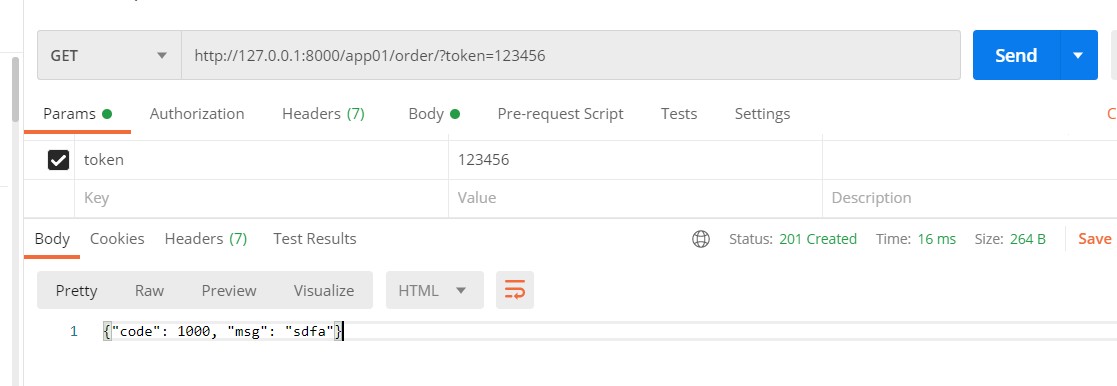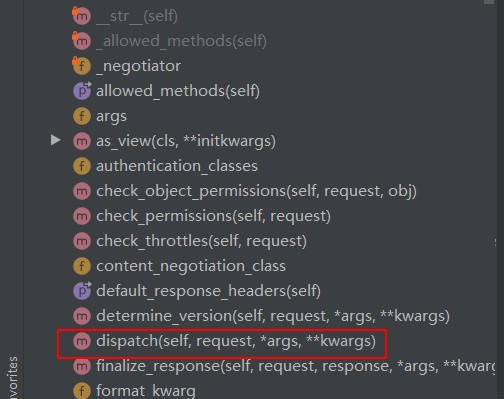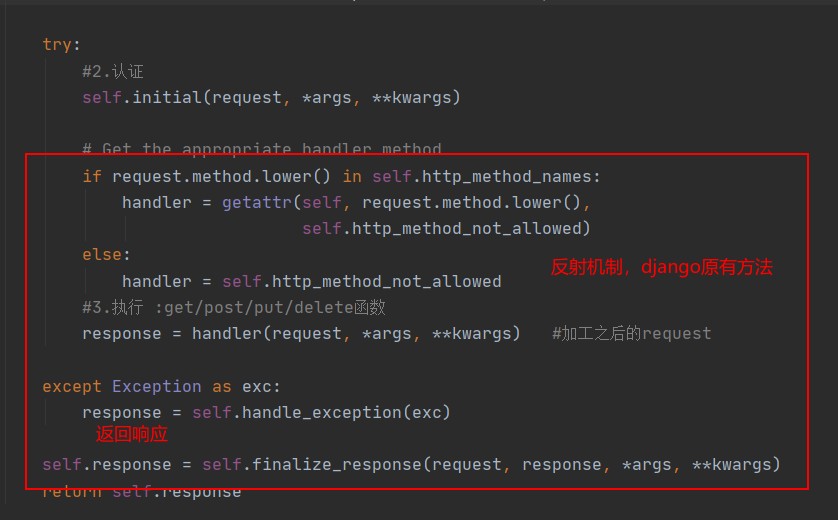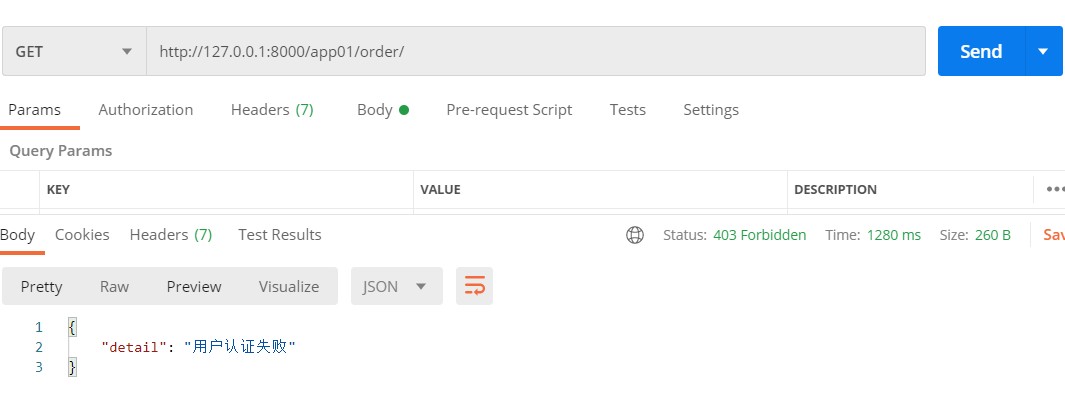例:
class OrderView(APIView): #authentication_classes = [MyAuthentications, ] def get(self, request, *args, **kwargs): self.dispatch print(request) ret = { 'code': 1000, 'msg': 'sdfa' } return HttpResponse(json.dumps(ret), status=201) def post(self, request, *args, **kwargs): return HttpResponse('创建订单')
#上述中的大致步骤为 1.对request进行加工 2.(1)处理版权信息 (2)认证 (3)权限 (4)频率限制 3.执行 get/post/put/delete函数,此request为加工后的request 4.对返回结果再次进行加工
1.封装request #对原生的request进行加工 #return Request( request,
#封装了原生request,
parsers=self.get_parsers(),
authenticators=self.get_authenticators(),
negotiator=self.get_content_negotiator(),
parser_context=parser_context) #现在我们对request进行了两个操作(原生request,[BasicAuthentication(),]) request = self.initialize_request(request, *args, **kwargs) #获取原生requests,request._requests #获取认证类的对象,request.authenticators self.request = request self.headers = self.default_response_headers # deprecate? #进入initalize_request def initialize_request(self, request, *args, **kwargs): """ Returns the initial request object. """ parser_context = self.get_parser_context(request) return Request( request, #封装了原生request parsers=self.get_parsers(), #[BasicAuthentication(),] #实例化对象 authenticators=self.get_authenticators(), negotiator=self.get_content_negotiator(), parser_context=parser_context ) #这里封装了原生request、认证、版本控制、上下文解析等方法 def get_authenticators(self): """ Instantiates and returns the list of authenticators that this view can use. """ return [auth() for auth in self.authentication_classes] #实例化
- 若想要调用APIView中的方法,ctrl+Request 到request.py中
-
self._request = request self.parsers = parsers or () self.authenticators = authenticators or () self.negotiator = negotiator or self._default_negotiator() self.parser_context = parser_context self._data = Empty self._files = Empty self._full_data = Empty self._content_type = Empty self._stream = Empty 例:request._request.POST.get('username')
-
#2.认证 def initial(self, request, *args, **kwargs): """ Runs anything that needs to occur prior to calling the method handler. """ self.format_kwarg = self.get_format_suffix(**kwargs) # Perform content negotiation and store the accepted info on the request #下两行做版本处理的 neg = self.perform_content_negotiation(request) request.accepted_renderer, request.accepted_media_type = neg # Determine the API version, if versioning is in use. version, scheme = self.determine_version(request, *args, **kwargs) request.version, request.versioning_scheme = version, scheme # Ensure that the incoming request is permitted #4.实现认证 # 含原生的以及认证 self.perform_authentication(request) #做频率限制的 self.check_permissions(request) self.check_throttles(request)
#ctrl 进入我们实现认证的方法 perform_authentication def perform_authentication(self, request): """ Perform authentication on the incoming request. Note that if you override this and simply 'pass', then authentication will instead be performed lazily, the first time either `request.user` or `request.auth` is accessed. """ request.user #这里的request是APIView的,执行request的user
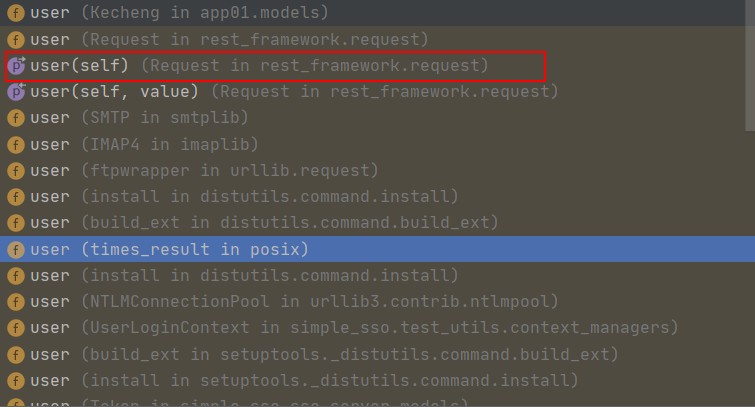
@property def user(self): """ Returns the user associated with the current request, as authenticated by the authentication classes provided to the request. """ if not hasattr(self, '_user'): with wrap_attributeerrors(): #获取对象认证,进行一步步的认证 self._authenticate() return self._user
#执行self._authenticate() 开始用户认证,如果验证成功后返回元组: (用户,用户Token) def _authenticate(self): """ Attempt to authenticate the request using each authentication instance in turn. """ #[BasicAuthentication对象] #循环对象列表 for authenticator in self.authenticators: try: #执行对象的authentication方法 user_auth_tuple = authenticator.authenticate(self) except exceptions.APIException: self._not_authenticated() raise if user_auth_tuple is not None: self._authenticator = authenticator self.user, self.auth = user_auth_tuple #返回一个元祖,user、auth return
#如果认证成功,执行_authenticate方法,若认证失败抛出异常调用self._not_authenticated() def _not_authenticated(self): """ Set authenticator, user & authtoken representing an unauthenticated request. Defaults are None, AnonymousUser & None. """ #如果跳过了所有认证,默认用户和Token和使用配置文件进行设置 self._authenticator = None if api_settings.UNAUTHENTICATED_USER: self.user = api_settings.UNAUTHENTICATED_USER() else: self.user = None if api_settings.UNAUTHENTICATED_TOKEN: self.auth = api_settings.UNAUTHENTICATED_TOKEN() else: self.auth = None
class MyAuthentications(object): def authenticate(self, request): token = request._request.GET.get('token') print(token) if not token: raise exceptions.AuthenticationFailed('用户认证失败') return ('xinzong', None) def authenticate_header(self, val): pass class OrderView(APIView): authentication_classes = [MyAuthentications, ] def get(self, request, *args, **kwargs): self.dispatch print(request) ret = { 'code': 1000, 'msg': 'sdfa' } return HttpResponse(json.dumps(ret), status=201) def post(self, request, *args, **kwargs): return HttpResponse('创建订单')
携带token
